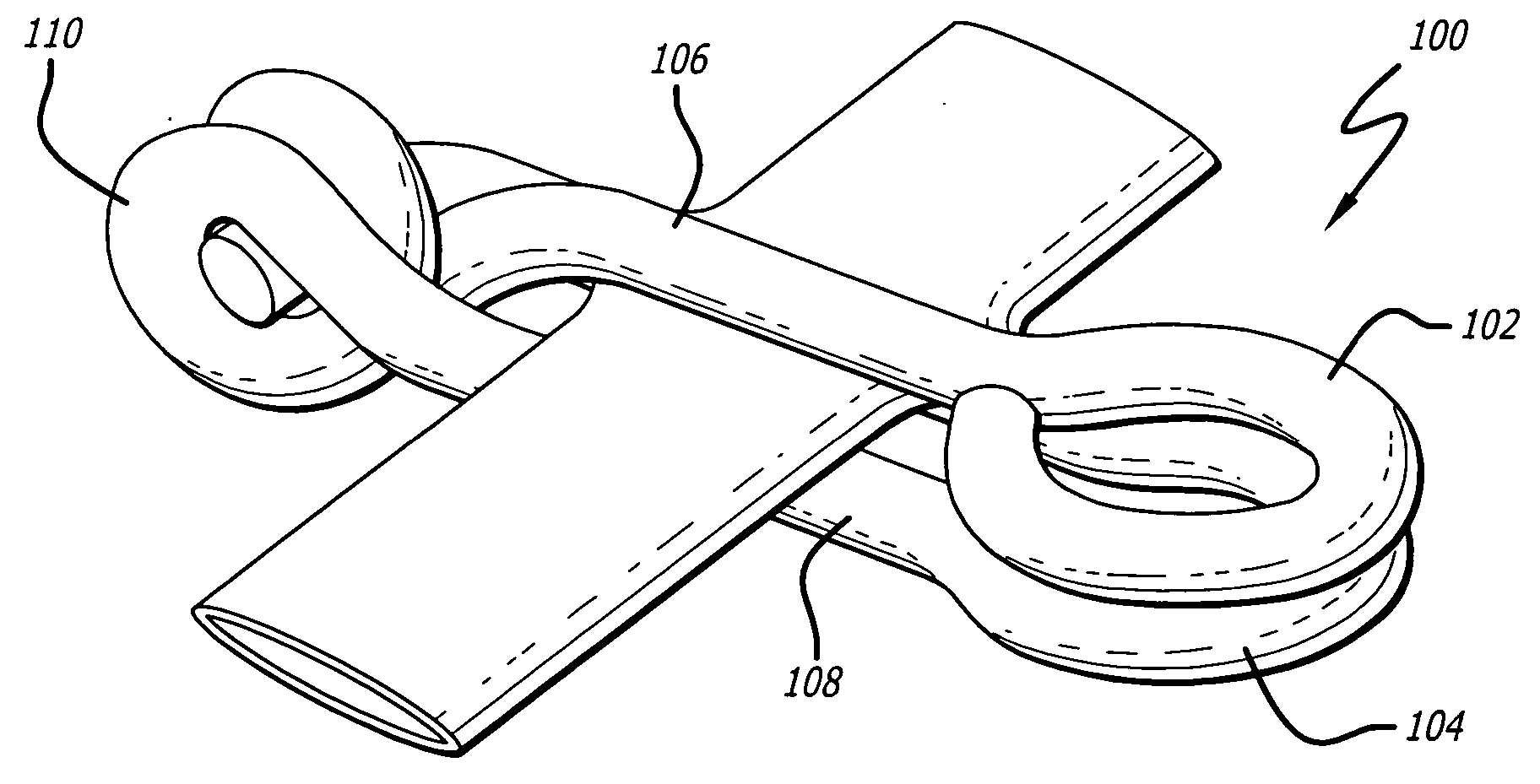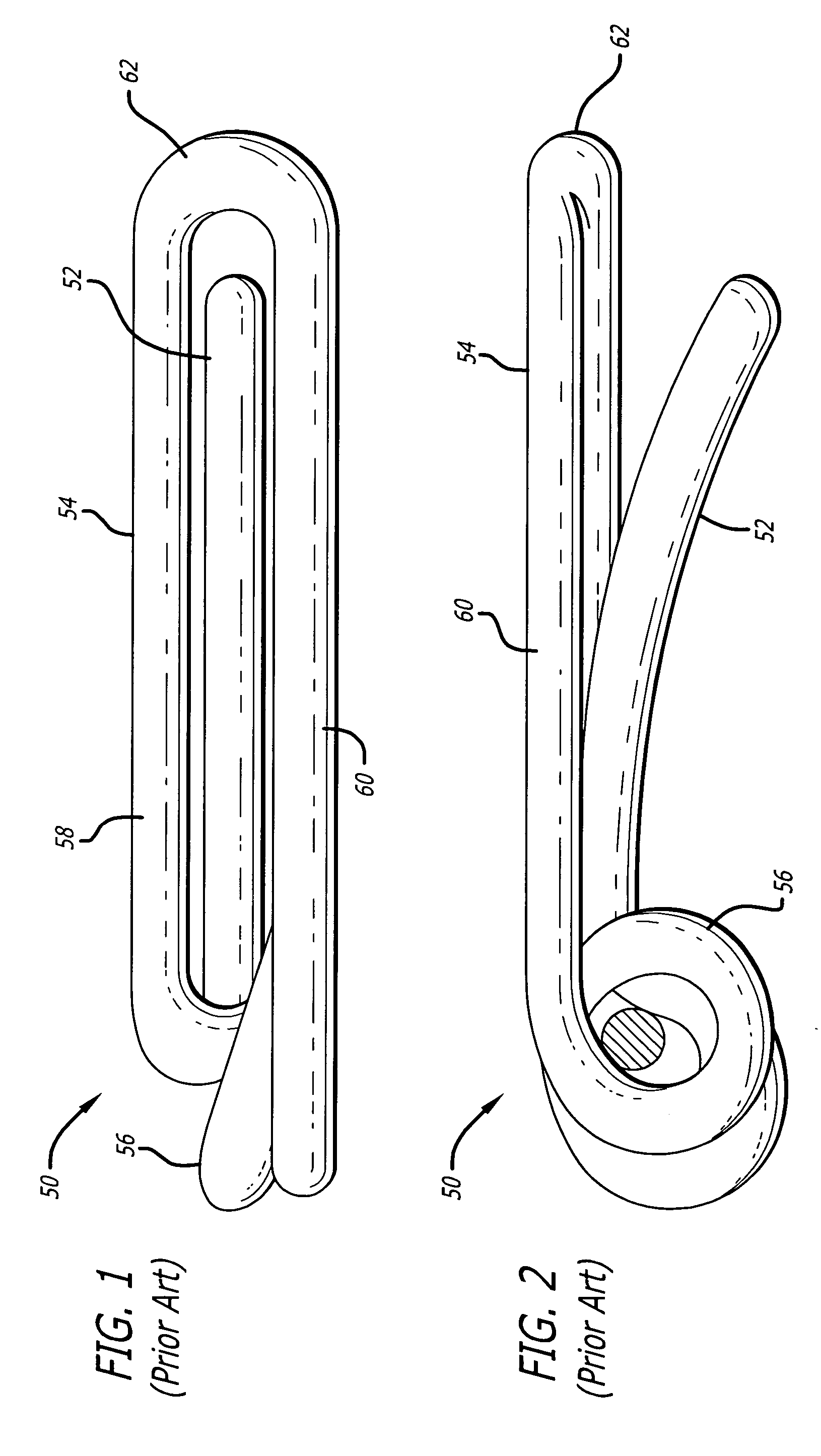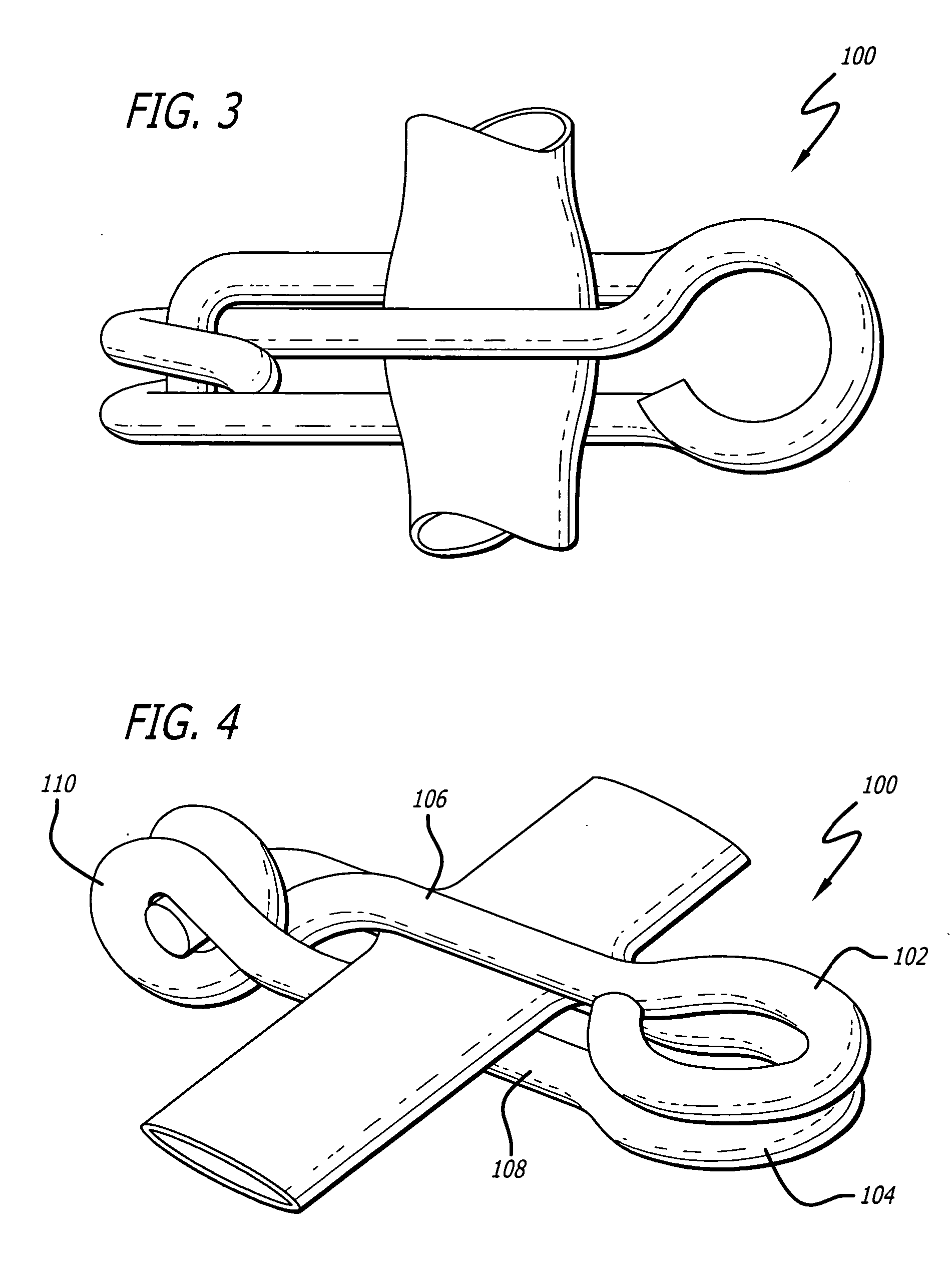Ligation clip applier
a clip and applicator technology, applied in the field of mechanical devices, can solve the problems of ligation clips, variable force applied by the clip to the vessel, and difficulty in removal or repositioning,
- Summary
- Abstract
- Description
- Claims
- Application Information
AI Technical Summary
Problems solved by technology
Method used
Image
Examples
Embodiment Construction
[0035] Reference will now be made in detail to the present preferred embodiments (exemplary embodiments) of the invention, examples of which are illustrated in the accompanying drawings.
[0036]FIGS. 3 and 4 show an example of a surgical ligation clip 100 usable with a preferred embodiment of the clip applier of the present invention. Surgical ligation clip 100 includes a clamping arm 106 and a support member 108. A coil tension spring 110, which may also be generally referred to as a connector, joins clamping arm 106 and support member 108.
[0037] Clamping arm 106 has a first enlarged end 102 defined thereon. Support member 108 has a second enlarged end 104 defined thereon. The first and second enlarged ends 102, 104 are first and second wire loops which are integrally formed with clamping arm 106 and support member 108 of clip 100.
[0038] Loops 102, 104, and particularly the laterally outer portions thereof, may be described as first and second control surfaces being received in an...
PUM
 Login to View More
Login to View More Abstract
Description
Claims
Application Information
 Login to View More
Login to View More - R&D
- Intellectual Property
- Life Sciences
- Materials
- Tech Scout
- Unparalleled Data Quality
- Higher Quality Content
- 60% Fewer Hallucinations
Browse by: Latest US Patents, China's latest patents, Technical Efficacy Thesaurus, Application Domain, Technology Topic, Popular Technical Reports.
© 2025 PatSnap. All rights reserved.Legal|Privacy policy|Modern Slavery Act Transparency Statement|Sitemap|About US| Contact US: help@patsnap.com



